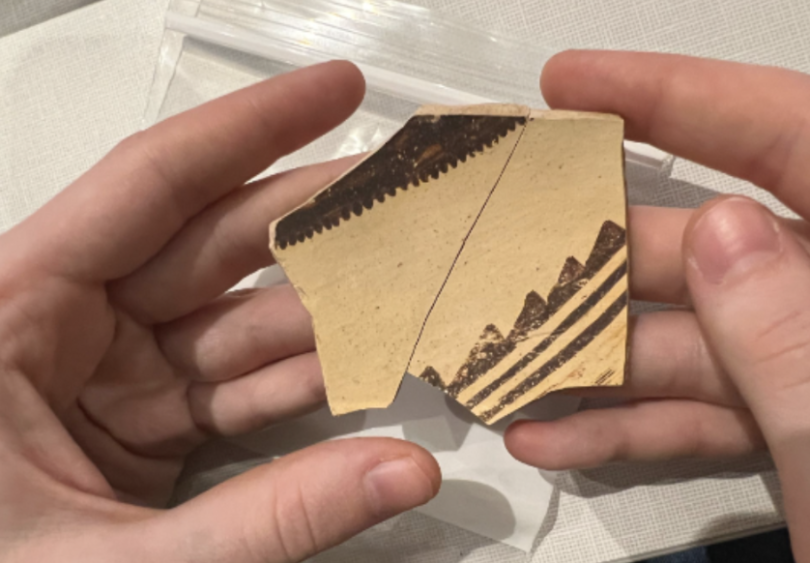
Winter Course Recap
Hi all! I loved my winter term courses this year; this was my best term regarding how much I enjoyed each of my classes. I was in three courses this quarter: Ancient Medicine, Human Evolution, and Introduction to Archaeology. In this blog post, I will tell you a little about each of my courses!
CLST 10.01: Ancient Medicine
My first course from this term was Ancient Medicine—a one-hour class three times a week (Monday, Wednesday, Friday). Ancient Medicine was a Classical Studies course, meaning the content focused on the Greco-Roman origins of healing and medicine. The course's content was split into three modules—Homer and the Hippocratic Corpus, Medicine in the Hellenistic and Roman Worlds, and Plague and Plague Literature—and ended with our chosen final project. My group's final project involved healing deities from other cultures and compared them to healing deities we discussed in class, like Asclepius!
Our class had two major field trips: one to the anatomy lab at the Geisel School of Medicine and the other to the Rauner Special Collections Library! At the anatomy lab, we held human brains, lungs, and hearts and even saw an intact donor body. We also compared healthy organs to those with visible pathology and saw a little bit of comparative anatomy—comparing the brain and heart structures of dogfish sharks, rats, foxes, and humans. This field trip aimed to see what Galen and his contemporaries were describing in their medical writings. At the Rauner Special Collections Library, we handled ancient medical writings. Engaging directly with these ancient texts and witnessing what medics and scholars were reading was very interesting.

ANTH 41: Human Evolution
Human evolution has to take the title of my favorite course yet. This class was in the 10A block, meaning we had a two-hour lecture every Tuesday and Thursday. Our professor elected to use the "x-hour" time slot, a 55-minute block allocated to each course. Our x-hour consisted of students analyzing fossils we learned about in our weekly lectures. The paleoanthropology lab has so many fossils (see some highlights below). The course started with the basics of paleoanthropology: osteology, paleontology, primatology, and geology. Then, the course included everything about the evolution of humans—beginning from the divergence of cercopithecoid monkeys and apes!
The assessments for this course were "lab practicals," meaning we were given fossils and asked questions about them in two-minute intervals. This was a unique and effective form of assessment, and it was fun to engage with the hallmark "fossils." Our final project was to research a mystery fossil—our professor gave us fossils with varying amounts of information on them, and we had to assess and write a paper on them.


ANTH 005: Introduction to Archaeology
My last class from this term was Introduction to Archaeology. I had this class each Monday, Wednesday, and Friday for an hour each day. This course fulfilled a major requirement for me, as anthropology majors must take at least one course in 3 anthropological disciplines: cultural anthropology, biological anthropology, and archaeology. We learned everything about the basics of archaeology and even got to engage with some pottery sherds (see photo below) and use LIDAR maps to analyze archaeological features. This course was heavily participation-based, as we discussed the previous day's readings in each class and played some trivia on the content. Professor McLeester also invited guest speakers each Friday for "fun Fridays." These lectures included various topics like biblical archaeology, the archaeology of alcohol, and the archaeology of video games. Overall, this was an interesting introductory course!


















